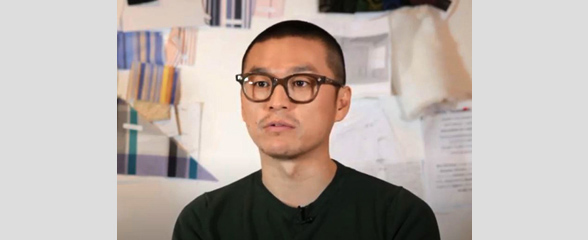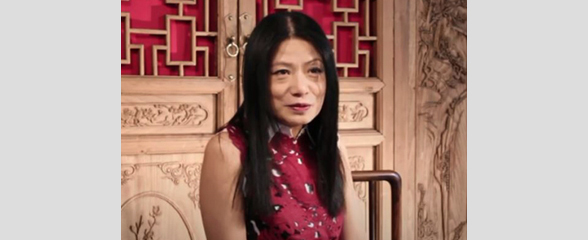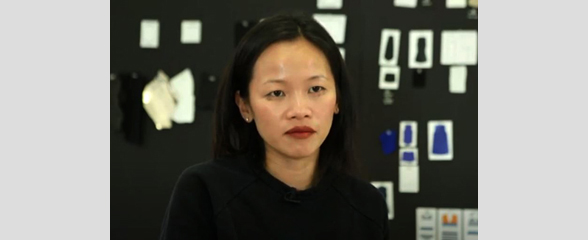Chinese Americans--Ethnic identity

2013.021.011 Oral History with Thomas Chen
Thomas Chen was born in Wuhan, China and moved to Detroit at 11 because of his father’s job. Chen had trouble speaking English but felt assimilated anyway because of his observations of clothing. Chen believes that New York is the true capitol of American fashion. His background as Chinese-American creates a duality.

2013.021.012 Oral History with Vera Wang
Vera Wang received fashion insight from her mother at a young age. Her time as a young professional figure skater was attributed to her fashion interest. Wang worked at Vogue and met influential individuals and then moved on to Ralph Lauren where she got “on the ground training†as a designer. She then was convinced to start a wedding fashion company by her father. Wang feels that her Chinese heritage has had a general influence on her work in many ways. One way is her use of red in a wedding dress, which was on display.

2013.021.013 Oral History with Vivienne Tam
Vivienne Tam is born in Canton, and grew up in Hong Kong. Because of poverty, she made clothe for herself in childhood. When she grew up and back to China again, just found the traditional beauty and begin to combine the east and west together and combine the modern and traditional together. Tam devote herself to express the Chinese-ness to the world.

2013.021.014 Oral History with Wayne Lee
Wayne Lee was born in Chinese family in Vietnam, and grew up in Florida. She was inspired by the coworkers of her first job in Barneys, and began to pursue the career of fashion design. Lee thought the most important spirits of setting up a business in New York are hardworking, passion, persistent, patient, and following your heart.

2013.021.015 Oral History with Yeohlee Teng
Yeohlee Teng was born in Malaysia and studied fashion at Parsons School of Design. She start her own brand just because she want to get more control over her work. She grow up with the idea of zero waste, and design clothes that one-size-fits-all. And she also think math is the foundation of fashion design business.

2013.021.016 Oral History with Zang Toi
Zang Toi was born and grow up in a little village in Malaysia and was the 7th boy in his family, and his only younger sister courage him to peruse dream of fashion design. He got design training at Parsons School of Design when he was 20 years old. He doesn’t want to be someone next the big brand and follow the trend, but just want to be Zang Toi, so he start his own brand and put his own stamp on the fashion map. He thinks fashion design is a kind of serious business, not just fashion, hardworking is necessary. Zang Toi is so proud of being the forefront in Asian fashion community, and he thought this is a long way since 23 years ago till now.

2013.022.010 Oral History Interview with Yun Xing Huang
Yun Xing Huang was interviewed by MOCA to talk about his immigration and living experiences in New York City’s Chinatown. As a professional singer, Huang owned a nightclub in Fujian before coming to the US during the prevalent immigration wave in China. He worked as a food delivery person before opening a floral shop on his own, singing songs for wedding parties, and acting in films. He praised the brave spirit of Fujianese people but touched upon the geographical discrimination between Changle people and Lianjiang people, who are both from Fujian province, in Chinatown.
However, when asked about his views on Chinatown, Huang expressed negative sentiments. He drew from his own experience in a film depicting the living situation in Chinatown, where new immigrants live in small spaces and must even climb up to four-level beds due to limited budgets. This continues to be a reality for many immigrants in Chinatown today.
In the end, Huang emphasizes the importance of legal status for Chinese immigrants. Their temporary immigrant status discourages them from traveling, buying houses, and conducting large business transactions. Only legal status can guarantee stability and prosperity for the Chinese community.